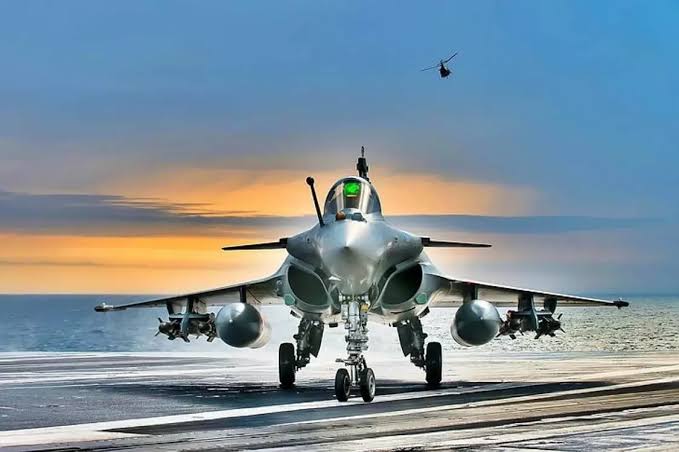In a landmark development for India’s maritime defence preparedness, the central government has cleared a government-to-government deal with France for acquiring 26 Rafale Marine fighter jets. Estimated to cost over Rs 65,000 crore, the deal is set to be signed in the coming weeks, according to defence officials familiar with the matter.
What Rafale M is Specially Designed for?
The twin-engine Rafale M aircraft are specifically designed for operations from aircraft carriers. Equipped with robust landing gear, arrestor hooks, and corrosion-resistant materials, these jets are tailor-made to endure the rigours of sea-based deployments. Their advanced avionics and weapons systems will provide a significant boost to India’s naval aviation capabilities.
Deliveries of the fighter jets are projected to commence by late 2029, with the complete induction expected by 2031. The aircraft will be deployed on India’s indigenous aircraft carrier INS Vikrant, as well as the INS Vikramaditya, replacing the ageing MiG-29K fleet currently in service.
All You Need to Know About the Aircraft
Out of the 26 aircraft, 22 will be single-seaters and four will be twin-seater trainer variants. Alongside the jets, the agreement also includes a comprehensive support package covering spare parts, simulators, maintenance equipment, personnel training, and logistical support. The contract also mandates offset obligations, promoting domestic production and skill development under the ‘Make in India’ initiative.
The Cabinet Committee on Security (CCS), headed by Prime Minister Narendra Modi, approved the procurement as a priority step to enhance India’s defence posture in the Indian Ocean region. The deal, which follows the Defence Acquisition Council’s clearance in 2023, is viewed as a stopgap arrangement until India develops its own Twin-Engine Deck-Based Fighter (TEDBF) through DRDO.
Rafale M Will Operate by STOBAR
The Rafale M jets will operate using the STOBAR (Short Take-Off But Arrested Recovery) technique, compatible with India’s ski-jump aircraft carriers. This technology induces significant stress on airframes, which the Rafale M is designed to withstand due to its reinforced structure.
Notably, the Indian Air Force already operates 36 Rafale jets, procured earlier from France. The naval version’s induction will help streamline training and maintenance infrastructure across both services. Additionally, IAF’s Rafales are expected to receive upgrades allowing them to act as airborne tankers using the buddy refuelling system, further improving India’s aerial reach.
This procurement marks a strategic step in modernising India’s naval capabilities, bridging the gap until indigenous fighter programs reach maturity.


